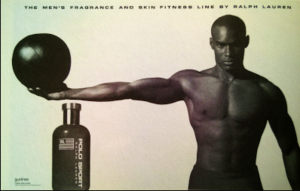Intersectionality and Race
Intersectionality and race have multiple impacts in film and media. From my Critical Media analysis I learned history has created multiple discourses of race. This was emphasized by Moolan’s (2013) article. Moolan (2013) explains the importance to understand of history’s effects of Intersectionality and race.
My thoughts about this advertisement for cologne are about racialized stereotypes. This advertisement is a great example of a racialized male portraying a specific stereotype.
In the past the impact of film and media have shaped racialized and non-racialized peoples beliefs and values. This leads to how racialized people feel they should act because of how the dominant culture thinks they “should act.”
Rubie-Davies (2013) provides an example of how racialized men are portrayed in advertisements. In the article they explain that it is typical for African American men to be cast as athletes rather than professionals. This is seen in the cologne advertisement. This makes me question, why the model is holding a basketball and not wearing a suit? Therefore this historic representation is problematic because it ignores other skills the person or group may posses but most importantly this over-emphasizes their physical skills. This is seen in a theory and concept we discussed in class. The oppositional gaze is a way to explain how racalized people are portrayed in the media. The oppositional gaze also explains how power relations are seen in film and media. This gaze looks to see the power relations in film and media to create awareness.
Bibliography
Moolman, Benita. 2013. “Rethinking ‘masculinities in transition’ in South Africa considering the ‘Intersectionality’ of race, class, and sexuality with gender.” African Identities 11, no. 1: 93-105.
Rubie-Davies, Christine M., Sabrina Liu, and Kai-Chi Katie Lee. 2013. “Watching Each Other: Portrayals of Gender and Ethnicity in Television Advertisements.” Journal Of Social Psychology 153, no. 2: 175-195

Leave a Reply